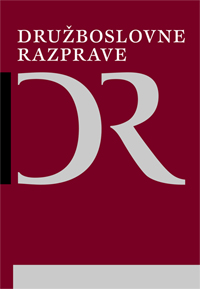Regime change and elite dynamics in Slovenia during the 1990s: what can the elite reproduction rates tell us?
Regime change and elite dynamics in Slovenia during the 1990s: what can the elite reproduction rates tell us?
Author(s): Anton Kramberger, Vasja VehovarSubject(s): Social Sciences
Published by: Slovensko sociološko društvo (in FDV)
Keywords: elite reproduction; elite circulation; Slovenia
Summary/Abstract: This paper deals with elite-reproduction and elite-circulation concepts and their connection to the ‘elite-continuity’ discussion, which appeared frequently during the last decade in transition countries. It uncovers certain ambiguities of the elite-circulation thesis, which then cause several problems in an empirical investigation of elite dynamics. A methodological framework, according to the manpower planning approach, is developed to meaningfully calculate elite reproduction rates. The rates for Slovenia are then calculated, based on the Elite Study Survey (1995) which collected information on elite composition in 1988 and in 1995, and on elite mobility during that time. These short-term rates of elite reproduction are compared against the long-term (1976-1992) rates of leaders’ reproduction, based on the retrospective Quality of Life in Slovenia study (1994). Elite reproduction rates during the first years of transition (the regime change 1988-1995) were significantly above a long-term average only in the segment of politics. However, the findings also indicate a controversial origin of political (in)stability in Slovenia. Namely, the (positional) replacement and renewal of Slovenian (positional) elites in the past always happened at a higher level than the (positional) reproduction of the general population; which is a surprising fact. At the least, a frequent elite replacement brought a lot of ‘disappointment’ with the politics to both ‘overly mobile’ public servants and ordinary people. On the other side, it might have relaxed and reconciled political tensions, too. An illustrative example of an ‘honest and brave’ diagnosis of malfunctions in the field of public tenders but misguided remedy of how to find a way out of this complex policy problem is given at the end of the paper.
Journal: Družboslovne razprave
- Issue Year: 16/2000
- Issue No: 032-033
- Page Range: 143-180
- Page Count: 38
- Language: English

